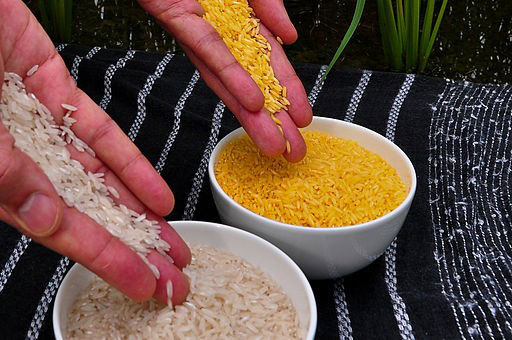Heralded on the cover of Time magazine in 2000 as a genetically modified crop with the potential to save millions of lives in the Third World, Golden Rice is still years away from field introduction and even then, may fall short of lofty health benefits still cited regularly by GMO advocates, suggests a new study from Washington University in St. Louis.
“Golden Rice is still not ready for the market, but we find little support for the common claim that environmental activists are responsible for stalling its introduction. GMO opponents have not been the problem,” said lead author Glenn Stone, professor of anthropology and environmental studies in Arts & Sciences at the university.
First conceived in the 1980s and a focus of research since 1992, Golden Rice has been a lightning rod in the battle over genetically modified crops.
GMO advocates have long touted the innovation as a practical way to provide poor farmers in remote areas with a subsistence crop capable of adding much-needed Vitamin A to local diets. A problem in many poor countries in the Global South, Vitamin A deficiencies leave millions at high risk for infection, diseases, and other maladies such as blindness.
Some anti-GMO groups view Golden Rice as an over-hyped Trojan Horse that biotechnology corporations and their allies hope will pave the way for the global approval of other more profitable GMO crops.
GMO proponents often claim that environmental groups such as Greenpeace should be blamed for slowing the introduction of Golden Rice, and thus prolonging the misery of poor people who suffer from Vitamin A deficiencies.
In a recent article in the journal Agriculture & Human Values, Stone and co-author Dominic Glover, a rice researcher at the Institute for Development Studies at the University of Sussex, find little evidence that anti-GMO activists are to blame for Golden Rice’s unfulfilled promises.
“The rice simply has not been successful in test plots of the rice breeding institutes in the Philippines, where the leading research is being done,” Stone said.
As Stone and Glover note in the article, researchers continue to have problems developing beta carotene-enriched strains that yield as well as non-GMO strains already being grown by farmers.
Meanwhile, as the development of Golden Rice creeps along, the Philippines has managed to slash the incidence of Vitamin A deficiency by non-GMO methods, Stone said.





